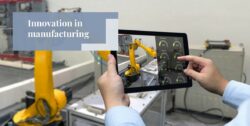Businesses in fast-moving consumer goods need to stay ahead and remain competitive. However, the industry still faces challenges with digital transformation. A survey undertaken by PwC, CEO Viewpoint 2017: The Transformation of Retail, found that while digital transformation is viewed by many FMCG companies as critical, their strategy, planning, and implementation is much slower than desired. The three biggest barriers to digital transformation are the IT team’s ability to deliver on the strategy, a lack of leadership to define a digital transformation strategy, and a lack of the pre-requisite skills to execute on the strategy.
Most consumer companies recognize that the core of the problem lies in the supply chain. That’s why omnichannel has become such a strong buzzword in the industry. But while plenty of companies are striving to create an omnichannel supply capability, few have succeeded.
Working with leading CPG players around the world, McKinsey & Company has identified five elements that shape an effective network strategy:
1. Cross-functional collaboration
To make business decisions that drive value for the whole company, and not just for individual pieces within the organization, a company needs to look at its business and operations from an integrated perspective. To do that, successful companies set up cross-functional teams right from the beginning of the omnichannel journey, and they keep them in place all the way from strategy definition to implementation.
2. Omnichannel strategy
The second must-have is a go-to-market and service strategy that defines which channels the company will serve and which services it wants to offer consumers online, offer in its own brick-and-mortar stores, and offer to its wholesale and retail customers. This strategy must be clearly segmented, with definitions for each channel, customer group, product category, and location. The strategy must also define what the organization does not want to offer.
3. Supply-chain network
The third must-have is an optimized supply-chain network. Getting that right requires a company to decide where to position inventory and how products should flow from the factory to the customer. They also need to decide which parts of the supply chain they should own and run themselves, where it makes sense to partner with other organizations, and who those partners should be. The supply-chain-network strategy needs to reflect the DNA of the company. A poorly set up network will prevent a company from achieving the required service levels, push up distribution costs, and erode profits.
4. Supply-chain capabilities
Then there is the next generation of the supply chain capabilities. The capabilities required to run a segmented omnichannel supply chain are significantly different from those that have served many companies well in the past. Some capabilities have evolved over time to reflect the new environment, but many, such as advanced analytics in planning or distributed order management, just did not exist under older models, and they have to be built from scratch.
5. Transition plan
Last, companies need to get the transition right. In such a fast-changing environment, companies need to be quick and flexible during the implementation of the new segmented supply chains. They also need to change their approach and mindset. Transition requires an iterative approach, with frequent, rapid changes and adjustments.

Companies in some industries, primarily in the services sector, have already succeeded in fully integrating digital enablers into their organizations. Among the most prominent cases are companies that successfully disrupted entire industries, whether Blockbuster in media decades ago or Google in advertising today. Their organizations not only started from a good business plan and technology platform but also acquired the best people available to help them realize their vision. In supporting digital transformations in CPG and other industries, McKinsey & Company has identified three imperatives for mastering the enablers of a sustained digital journey:
1. Build a workforce with digital capabilities
CPG manufacturers must build new sets of digital capabilities and talent in the organization. Before recruiting talent with new capabilities, companies should fully assess their internal capabilities. In some cases, current employees may possess valuable digital knowledge that could be deployed in new ways, and these opportunities should be explored.

2. Facilitate rapid decision making through flexible governance and fewer constraints
To pursue the pace of change required for a digital transformation, CPG manufacturers must adapt their approach to governance. Success requires giving teams more freedom to determine how to spend their budgets, enabling easier access to decision makers, and giving teams greater flexibility in deciding what to focus on. It is especially important to adopt a “fail to succeed” mentality, in which employees are encouraged to test ideas and proposals early on without expecting them to work the first time.
3. Collaborate extensively with external partners
Effective partnerships and collaboration with small Industry 4.0 startups have proven essential in large companies’ efforts to adopt digital technologies. For example, Amazon acquired Kiva Systems, whose expertise was instrumental in developing the cutting-edge robotic technology that is now widely used in the e-commerce giant’s warehouses.
While FMCG faces challenges with digital transformation, at Loftus Bradford, we make sure that our clients remain competitive and find the right talent to stay ahead in the game. We have successfully placed senior E-Commerce, Analytics and Digital Executives, which naturally became one of our areas of expertise.





